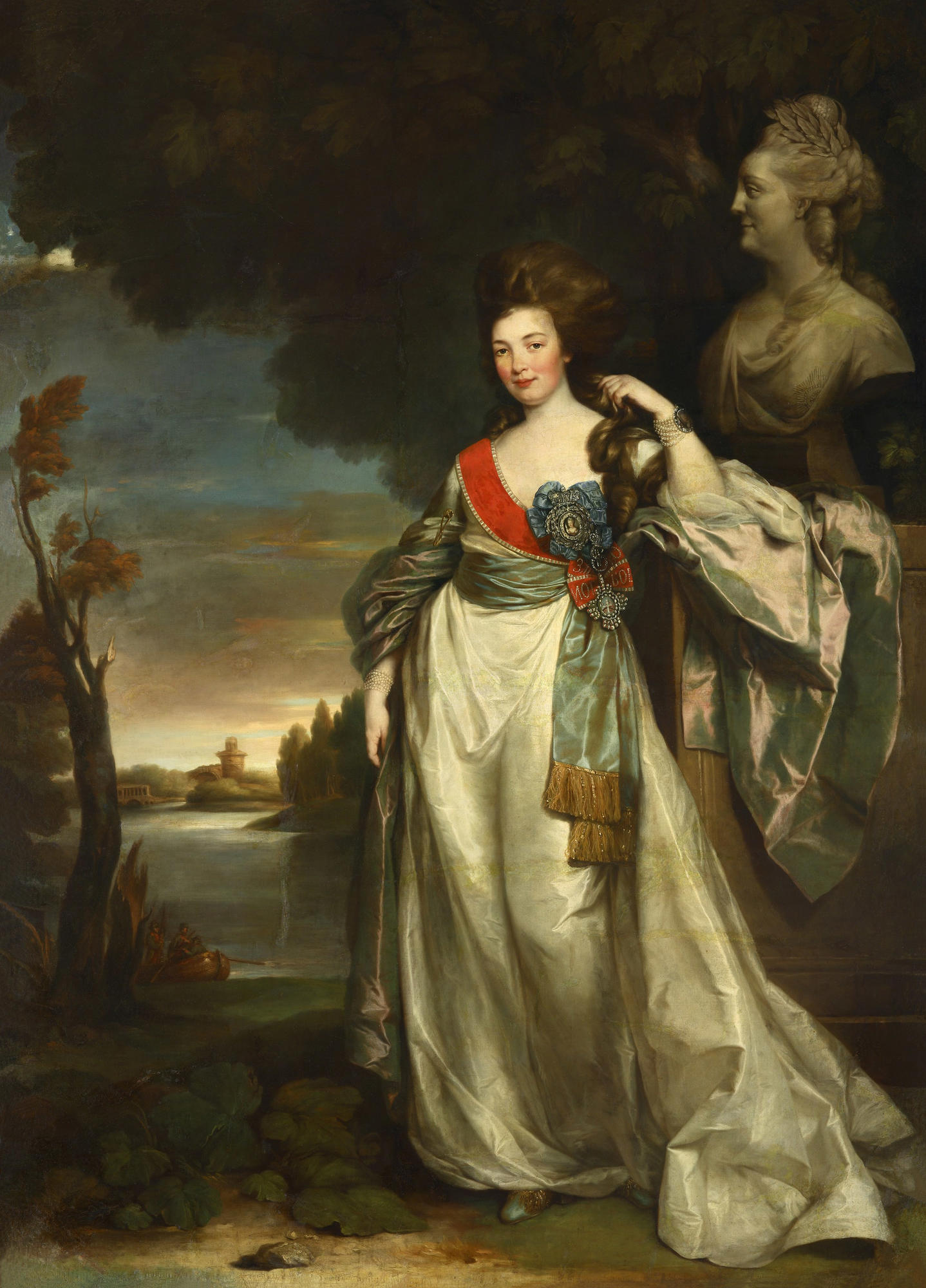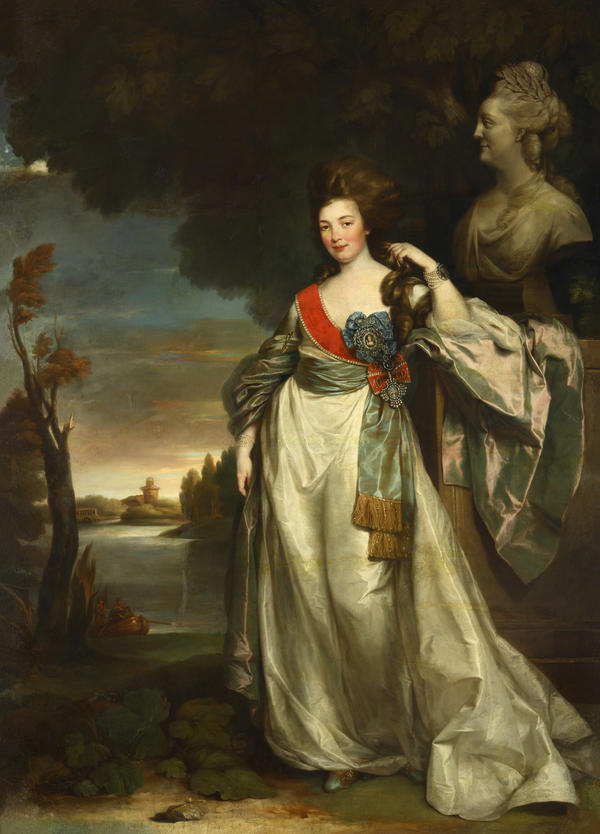In 1775, Alexander Engelhardt was introduced to the court by her uncle Gregory Potemkin. She got special attention from Catherine II, on November 24, 1777, she got the position of the chamber lady-in-waiting, entered the intimate circle of the empress and became her trustee.
In 1781, Alexander Vasilievna married the Polish Hetman Count Xaveria Branicki.
The portrait of Alexandra Branitskaya was painted shortly after marriage and getting the position of lady-in-waiting. The portrait visually complements the references given by the contemporaries to the countess: ‘tall, with a fresh face, perfectly pleasant and seriously smiling, with a completely royal posture’.
Her waist is tied under her chest by a wide blue belt with a gold fringe. There’s a red order ribbon and a sign of the Order of St. Catherine on her chest. Branitskaya was awarded with the Order for the service to the royal household. After her marriage, she accompanied Catherine II on her trip through the Dnieper. She together with the diplomat, Prince de Lin, was on the first meeting of the Empress with the Austrian emperor Joseph II.
To the left of Alexandra Vasilievna is depicted a marble portrait sculpture of Empress Catherine II. The left hand of Branitskaya was resting on the base of the sculpture. There’s the landscape of the English Park in Tsarskoe Selo in the background of the portrait. In the foreground, the artist depicted a tree with a broken branch. It is possible to see in the distance a boat with three fishermen on the bank of the Big Pond, the Palladiansky bridge behind them, Tower ruins, islands.
The author of the painting English portrait artist Richard Brompton was a student of artists Wilson and Mengs. Brompton worked as a court figure-painter of King George III. He had many orders, however, in England, he found himself in debt. Empress Catherine II ordered to pay the artist 's debts and invited him to work in Russia. In 1780 Brompton was appointed to a position of court artist. In Russia, the artist lived for a short time and painted only a few portraits. He died of typhoid in 1782.
In 1781, Alexander Vasilievna married the Polish Hetman Count Xaveria Branicki.
The portrait of Alexandra Branitskaya was painted shortly after marriage and getting the position of lady-in-waiting. The portrait visually complements the references given by the contemporaries to the countess: ‘tall, with a fresh face, perfectly pleasant and seriously smiling, with a completely royal posture’.
Her waist is tied under her chest by a wide blue belt with a gold fringe. There’s a red order ribbon and a sign of the Order of St. Catherine on her chest. Branitskaya was awarded with the Order for the service to the royal household. After her marriage, she accompanied Catherine II on her trip through the Dnieper. She together with the diplomat, Prince de Lin, was on the first meeting of the Empress with the Austrian emperor Joseph II.
To the left of Alexandra Vasilievna is depicted a marble portrait sculpture of Empress Catherine II. The left hand of Branitskaya was resting on the base of the sculpture. There’s the landscape of the English Park in Tsarskoe Selo in the background of the portrait. In the foreground, the artist depicted a tree with a broken branch. It is possible to see in the distance a boat with three fishermen on the bank of the Big Pond, the Palladiansky bridge behind them, Tower ruins, islands.
The author of the painting English portrait artist Richard Brompton was a student of artists Wilson and Mengs. Brompton worked as a court figure-painter of King George III. He had many orders, however, in England, he found himself in debt. Empress Catherine II ordered to pay the artist 's debts and invited him to work in Russia. In 1780 Brompton was appointed to a position of court artist. In Russia, the artist lived for a short time and painted only a few portraits. He died of typhoid in 1782.



